Seventy-three years ago tomorrow, an obituary appeared in the San Francisco Chronicle. But first:
All families, I assume, have skeletons in their closets. Often these bones are fleshed out by stories that have become embellished over the years of a relative who did this or that and forever became the black sheep of the family – as if most families are all lambs from a pure, white flock!
Biographers of well-known people relish unearthing these skeletons to get all the facts that are (usually) fit to print. This juicy information helps to sell books as reviewers often highlight these tidbits. (The recent Kitty Kelley biography of Oprah comes to mind.)
In the case of GertrudeandAlice, there were skeletons in their closets and I don’t mean the fact that they were lesbians and never really “came-out” of the armoire. (Their close friends knew the score and many of Gertrude’s writings give plenty of hints about the relationship between her and her “secretary/companion.”)
Gertrude had three brothers and a sister, but one usually only hears about two of the brothers, Michael, the eldest and Leo, who was two years older than she was. Michael had been responsible for selling the family’s share in the street car business in San Francisco after their father’s death, giving the Steins enough money to live comfortably for almost fifty years. And both Michael and Leo along with Gertrude were responsible for amassing the famous Stein family collection of major artists of the early 20th century.
It was the two other siblings, Bertha and Simon, who have been relegated to skeletons-in-the-closet status, though as far as I know neither did anything horrendous including bad-mouthing any of their more well-known kin, so maybe it would be fairer to call them “tibias or fibulas in the closet.”
Maybe Gertrude should take the heat for estranging this sister and brother. She referred to both of them as “simple-minded” in her book EVERYBODY’S AUTOBIOGRAPHY – not exactly the kind of sentiment that brings families together. Simon did have a simple life, first working as a brakeman on the San Francisco cable cars (he had to retire from that job when he gained too much weight and later ran the stationery and cigar concession in an Italian grocery store. Bertha lived in Baltimore, married, raised a family and had no contact with her brothers and sister. Gertrude,however, wrote word portraits of two of her sons, Daniel and Arthur.
But then we come to Alice.
In her case, one fact that is included with biographical information about her is the suicide of her only sibling, a brother, Clarence in 1937. No additional information is usually given.
What I knew before I began piecing together Clarence’s life was that Alice had raised her brother after their mother’s death, Clarence was nine and Alice was twenty. Alice remembers him as a child both in a 1952 interview in which she fondly recalls him coming home with soot around his eyes after playing on a locomotive making him look like a raccoon . Later in her 1964 memoir she recounts her jealousy when he was born and her mother’s reassurance that she would still always come first.
By the time Alice left for Paris, Clarence was twenty one. According to one biographer, he and Alice had a falling out over legal matters pertaining to family property and I have never been able to find any information as to whether they corresponded or saw each other again after Alice moved, possibly during the U.S. lecture tour stop in San Francisco in 1935.
What really prompted me to begin additional sleuthing into Clarence’s life was a visit to the Toklas plot in the Jewish cemetery in Colma, California. I found the graves of Alice’s parents and an aunt and uncle, but not Clarence’s grave. Through an online search I found that he had been buried in the cemetery in San Francisco’s Presidio since he had served in World War I. I found the gravesite which also included the headstone of his wife, Claire.
As I continued my search into the mysterious life of Clarence Toklas, I found his obituary on microfilm in the San Francisco Public Library. Little did I know that that obituary, written more like a police report than a compassionate celebration of a life, though it provided many new facts, would in reality raise more questions than it provided answers. Here is a copy of the obituary as it appeared on August 24th, 1937 in the San Francisco Chronicle:
What!
A jump into the ocean, three letters, ill health, a move to a boarding house and a young son? Not to mention making Alice an authoress years before she wrote her first cookbook (maybe they thought she really had written THE AUTOBIOGRAPHY OF ALICE B. TOKLAS)?
What had prompted Clarence to end his life – his ill health, the breakup of his marriage, some financial problem alluded to in the letter to his wife? I have not been able to answer these questions though I did discover a number of things about his son, Teddy.
Teddy was born in 1916, stayed in San Francisco and served in the Air Force during WW II. After the war he worked for the Department of the Navy for 30 years. He married, but had no children. ( I have met one of his nieces who happens to live just about a mile from where I live in San Francisco!) He and his wife travelled extensively and he was very interested in the arts and served for many years as a volunteer at San Francisco’s DeYoung Museum. He died in 1998. His obituary in the San Francisco paper ended with:
“Ted is missed, but will always be remembered for his zest for living, candor, and ability to strip away the unimportant and nonessential and cut with humor and understanding to the heart of the matter.” (Sounds a bit like his Aunt Alice!)
As for remembering Clarence…
Gertrude included him in her first word portrait “Ada” written about Alice in 1910 in which he is named Barnes Colhard:
“When he was a good deal older he married a very rich girl. He had thought perhaps he would not propose to her but his sister wrote to him that it would be a good thing. He married the rich girl and she thought he was the most wonderful man and one who knew everything.”
And in 1915 in a poem called “All Sunday,” Gertrude wrote:
“Please be rich.
Clarence.
Clearance.
Puget Sound.
Seattle.
Bay.
No mosquitoes at all.”
A fitting epitaph? I don’t know, but certainly as mysterious and possibly undecipherable as the life of Clarence Ferdinand Toklas.

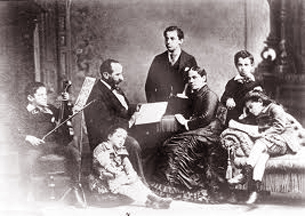
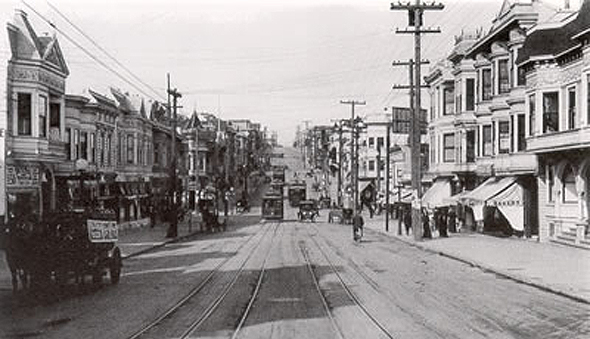

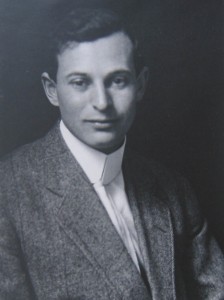
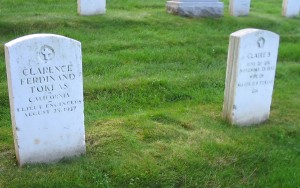

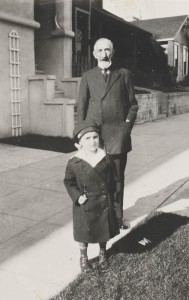



Leave a Reply
You must be logged in to post a comment.